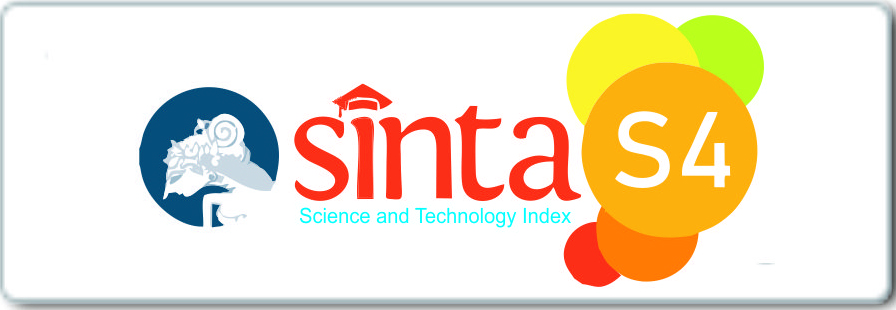Level of Knowledge of Clean and Healthy Living Behavior and Screening of Dental Maloclusion to Enhance Quality of Life Related to Dental and Oral Health In Medowo I and II Elementary School Students
Downloads
Background: The elementary school period is a golden age for instilling the values of clean and healthy living behaviour (CHLB) and has the potential as an agent of change to promote CHLB in schools, families and communities so as to create quality human resources in the future. Currently children are very vulnerable to dental and oral health, because at that age there is a transition or change of teeth, namely from deciduous teeth to permanent teeth, for that special attention needs to be given to dental and oral health so that the growth and development of teeth can be maintained properly. Purpose: to enhance knowledge of CHLB and screening of dental malocclusion in an effort to improve the quality of life related to dental and oral health. Methods: 116 participants from grades 3-5 elementary school students. Data was collected by means of intraoral examination and filling out pre-test and post-tests questionnaires. Furthermore, an analysis of the frequency distribution data was carried out by mean of statistical analysis. Results: male students had higher caries (59 people) and those who were not caries (4 people), compared to girls (47 people) and those who were not caries (6 people). CHLB knowledge level is good (86.8%), moderate (8.2) low (5%). Conclusion: caries in boys is higher than in girls and all respondents' knowledge of CHLB is good.
Suryani D, Maretalinia, Suyitno, Baiq R O, Elvi J, Ria, Aris Y. The Clean And Healthy Life Behavior (CHLB) Among Elementary School Students In East Kuripan, West Nusa Tenggara Province. Jurnal Ilmu Kesehatan Masyarakat. 2020;11 (1):10–22.
Banun TS. Hubungan Antara Pengetahuan CHLB Dengan Pola Hidup Sehat Siswa Di Sd Tamanan. J Pendidik Guru Sekol Dasar. 2016;5(14):1378–86.
Syreen SA, Anwar G, Rahman MZ. Prevalence of dental caries among children residing in muslim dominated area of Laheriasarai, Darbhanga. J Med Sci Clin Res. 2018 Dec 25;6(12):817-9.
Prasai Dixit L, Shakya A, Shrestha M, Shrestha A. Dental caries prevalence, oral health knowledge and practice among indigenous chepang school children of Nepal. BMC Oral Health. 2013 Dec 14;13(1)20.
Feldens CA, Dos Santos Dullius AI, Kramer PF, Scapini A, Busato AL, Vargas-Ferreira F. Impact of malocclusion and dentofacial anomalies on the prevalence and severity of dental caries among adolescents. Angle Orthod. 2015 Nov 1;85(6):1027–34.
Rahmawati D, Ardani IGAW, Hamid T, Fardhani I, Taftazani H, Nugraha AP, Kusumawardani MK. Surface Electromyography Reveal Association between Masticatory Muscles with Malocclusion Class I And Class III Skeletal in
Javanese Ethnic Patient. J Int Dent Med Res. 2021;14(4):1542–6.
Kementerian Kesehatan Republik Indonesia. Laporan Hasil RISKESDAS Indonesia Tahun 2013. Jakarta: Badan Penelitian dan Pengembangan Kesehatan. 2013; 21 p.
Gayatri WR, Ariwinanti D. Tingkat pengetahuan kesehatan gigi anak sekolah dasar Negeri Kauman 2 Malang. Prev Indones J Public Health. 2016;1(2):186.
Setiawan R, Adhani R, Sukmana BI, Hadianto T. Hubungan Pelaksanaan UGS dengan Status Kesehatan Gigi dan Mulut Murid Sekolah Dasar dan Sederajat di Wilayah Kerja Puskesmas Cempaka Putih Kota Banjarmasin. Dentino J Kedokt gigi. 2014; II(1):102–9.
Ratnaningsih T. Hubungan Pola Makan Dengan Kejadian Karies Gigi Pada Anak Usia 7 – 9 Tahun. Jurnal Kesehatan Bhamada, 2016;7(2):2–5.
Marquezan M, Marquezan M, Faraco-Junior IM, Feldens CA, Kramer PF, Ferreira SH. Association between occlusal anomalies and dental caries in 3-to 5 year-old Brazilian children. J Orthod. 2011 Mar 16;38(1):8–14.
Gilchrist F, Marshman Z, Deery C, Rodd HD. The impact of dental caries on children and young people: what they have to say? Int J Paediatr Dent. 2015;25(5):327–38.
Ardani IGAW, Pratiknjo IS, Djaharu'ddin I. Correlation between Dentoalveolar Heights and Vertical Skeletal Patterns in Class I Malocclusion in Ethnic Javanese. Eur J Dent. 2021 May 8;15(02):210–5.
Nurhidayah I, Asifah L, Rosidin U. Pengetahuan, sikap dan perilaku hidup bersih dan sehat pada siswa sekolah dasar. The Indones J Health Sci. 2021 jun 28;13(1):61–71.
Notoatmodjo S. Kesehatan masyarakat ilmu dan seni, Jakarta:Rineka Cipta. 1st edition. 2014; 10–5.
Lina HP. Perilaku hidup bersih dan sehat (PHBS) siswa di SDN 42 Korong Gadang Kecamatan Kuranji Padang. Jurnal Promkes. 2017;4(1): 92–103.
Raksanagara A. Perilaku hidup bersih dan sehat sebagai determinan kesehatan yang penting pada tatanan rumah tangga di Kota Bandung. Jurnal Sistem Kesehatan. 2016;1(1):30-4
Copyright (c) 2022 Dwi Rahmawati, I Gusti Wahju Aju Ardani, Alexander Patera Nugraha

This work is licensed under a Creative Commons Attribution 4.0 International License.
This is an open access journal, and articles are distributed under the terms of the Creative Commons Lisence, which allows others to remix, tweak, and build upon the work non-commercially, as long as appropriate credit is given and the new creations are licensed under the identical terms.
Copyright notice:
IJDM by UNAIR is licensed under a Creative Commons Atribusi 4.0 Internasional.
- The journal allows the author to hold the copyright of the article without restrictions.
- The journal allows the author(s) to retain publishing rights without restrictions.
- The legal formal aspect of journal publication accessibility refers to Creative Commons Attribution (CC BY)
















